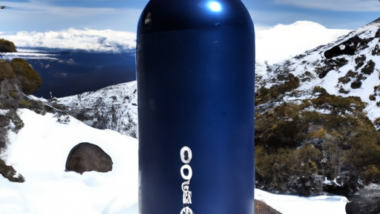When embarking on a hiking adventure, it’s important to be prepared for various challenges along the way. One potential obstacle you may encounter is crossing rivers or streams. While it may seem like a simple task, there are safety measures that should be kept in mind to ensure a safe and enjoyable hike. From choosing the right footwear to assessing the water’s depth and current, this article will provide you with essential tips for safely crossing rivers and streams during your hike.

This image is property of pixabay.com.
Preparation before Crossing
Before attempting to cross a river or stream during your hike, there are a few important steps to take in order to ensure a safe and successful crossing.
Check Weather Conditions
The first step in preparing for a river or stream crossing is to check the weather conditions. This is crucial because heavy rain or snowmelt can cause rivers and streams to rise rapidly, making them dangerous and difficult to cross. It is important to avoid crossing during or immediately after rainfall or when there is a high chance of precipitation.
Research River/Stream Crossings
Another important step is to research the specific river or stream crossings along your hiking route. Look for information on the depth and width of the water, as well as any potential hazards that may be present. This will help you assess the difficulty level of the crossings and plan accordingly.
Inspect the Crossing Point
Once you reach the crossing point, take the time to inspect the area before attempting to cross. Look for any obstructions, such as fallen trees or large rocks, that could impede your progress. It is also important to assess the condition of the river or stream bed, as uneven or slippery surfaces can increase the risk of accidents.
Assessing the Crossing Point
After checking the weather conditions and researching the river or stream crossings, it’s time to assess the specific crossing point that you will be using.
Evaluate Water Depth
The first thing to consider when assessing a crossing point is the water depth. This can be done by visually estimating the depth or by using a long pole or stick to measure the water depth at various points along the crossing. It is important to choose a crossing point where the water is not too deep, as this can make it difficult to maintain your footing and increase the risk of being swept away by the current.
Analyze the Current
Along with water depth, it is crucial to analyze the strength and speed of the current. A strong current can make it difficult to maintain your balance and increase the risk of being swept downstream. Look for calm areas within the stream where the current is slower, as these are generally safer to cross.
Identify Hazards
Lastly, identify any potential hazards in the crossing point, such as submerged rocks, fallen trees, or other debris. These obstacles can make it more challenging to maintain your balance and increase the risk of injury. By identifying and avoiding these hazards, you can significantly reduce the chances of encountering difficulties during your crossing.
Proper Gear and Equipment
Having the right gear and equipment is essential for a safe and successful river or stream crossing. Here are some items to consider:
Wear Proper Footwear
Choose footwear that provides good traction and ankle support. Opt for sturdy hiking boots or water shoes with a durable sole to prevent slips and protect your feet from sharp rocks or debris.
Use Trekking Poles or a Staff
Trekking poles or a staff can provide additional stability and support while crossing a river or stream. They can help you maintain your balance and navigate through uneven terrain.
Carry a Waterproof Bag for Electronics
To protect your valuable electronics, such as your phone or camera, carry a waterproof bag or dry sack. This will prevent water damage and keep your belongings safe and dry during the crossing.
Crossing Techniques
Knowing and employing the right crossing techniques can greatly enhance your safety and stability while crossing a river or stream.
Find a Suitable Area
Look for a suitable crossing area that offers a broad, shallow section of the river or stream. Avoid areas with deep or fast-moving currents, as well as areas with submerged hazards. By choosing a suitable area, you increase the likelihood of a successful crossing.
Use a Group Cross Technique
If crossing as part of a group, consider using the group cross technique. In this technique, each member of the group forms a line and links arms or holds onto a rope for stability. This technique provides mutual support and increases stability, particularly in areas with swift currents.
Sideways Shuffle
When crossing, use a sideways shuffle technique. Face upstream and take small steps while shuffling your feet sideways. This technique provides stability and reduces the risk of tripping or slipping on uneven surfaces.

This image is property of pixabay.com.
Crossing as a Group
Crossing a river or stream as part of a group requires additional coordination and communication to ensure the safety of everyone involved.
Assign a Cross Leader
Designate an experienced and confident member of the group as the cross leader. This person will be responsible for assessing the crossing conditions, choosing the best route, and coordinating the group’s crossing.
Maintain Visual Contact
While crossing, it is crucial to maintain visual contact with the rest of the group. This allows for quick communication and assistance if needed. Maintain eye contact and signal to each other to ensure that everyone is together and safe.
Stay Connected
If the group is crossing using the group cross technique, it is important to stay physically connected throughout the crossing. Ensure that everyone is linked by holding onto each other’s arms or a rope. This will provide stability and prevent anyone from being swept away by the current.
Solo Crossing
Crossing a river or stream alone requires extra caution and preparation. Here are some tips to ensure a safe solo crossing.
Consider Alternatives
If the river or stream is too deep or the current is too strong for a safe solo crossing, consider alternative options. Look for nearby bridges, shallower sections, or areas with natural stepping stones that could provide a safer route.
Choose Shallower and Wider Areas
When crossing solo, it is advisable to choose shallower and wider areas of the river or stream. These areas typically have a slower current and more stable footing, reducing the risks associated with crossing alone.
Use a Rope or a Stick for Balance
Carrying a rope or a sturdy stick can provide extra stability during a solo crossing. Use the rope to create a handrail or hold onto the stick for balance. This can help you navigate the current and maintain your footing.

This image is property of pixabay.com.
River Crossing Essentials
Regardless of whether you are crossing alone or as part of a group, there are several essential guidelines to follow for a safe river or stream crossing.
Never Rush
Take your time and never rush a river or stream crossing. Carefully assess the conditions, choose the best route, and proceed with caution. Rushing can lead to poor decision-making and increase the risk of accidents or injuries.
Test the Depth
Before fully committing to the crossing, test the depth of the water with a long stick or trekking pole. This allows you to gauge the depth and adjust your crossing technique if necessary. If the water is too deep or the current too strong, consider alternative crossing points or wait until conditions improve.
Gauge the Power of the Current
Pay attention to the strength and speed of the current. If the current seems too powerful or the water is moving swiftly, exercise caution and consider alternative options. It is important to cross in areas where the current is manageable and you can maintain your balance.
In Case of an Emergency
Despite the precautions taken, emergencies can still occur during river or stream crossings. It is essential to be prepared and know how to respond appropriately in such situations.
Emergency Signal Devices
Carry emergency signal devices, such as a whistle or a personal locator beacon. These devices can help you attract attention and signal for help if you find yourself in an emergency situation.
Appropriate Emergency Techniques
Know and practice appropriate emergency techniques, such as the downriver escape maneuver, in case you are swept away by the current. These techniques can help you navigate to a safe area or position yourself to be rescued.
How to Help Someone in Distress
If you encounter someone in distress during a river or stream crossing, stay calm and assess the situation. Extend a sturdy stick or rope to them for support and try to reach a safe area together. If necessary, call for help and provide assistance until professional help arrives.
After Crossing the River
Once you have successfully crossed the river or stream, there are a few important steps to take to ensure your well-being and the care of your gear.
Care for Wet Gear
If your gear has gotten wet during the crossing, take the time to dry and clean it properly. This will help prevent damage and prolong the life of your equipment.
Warm Up
After crossing a cold river or stream, it is important to warm up your body to prevent hypothermia. Change into dry clothes, eat a warm meal, and do some light exercises to increase your body temperature.
Assess the Group’s Condition
If crossing as part of a group, assess the physical and mental condition of each member. Check for any injuries, signs of fatigue, or psychological distress. Ensure that everyone is in a stable condition before continuing the hike.
Conclusion
Crossing rivers or streams during a hike can be challenging yet rewarding. By taking the time to prepare, assess the crossing point, choose the right gear, and employ appropriate techniques, you can minimize the risks and ensure a safe and enjoyable crossing experience. Remember to always prioritize safety, exercise caution, and make well-informed decisions. Happy hiking and safe river crossings!
Hi there! I’m the Editor, experienced outdoor development specialist, mountaineer and the mind behind ‘Country Rambler.’ I’m thrilled to welcome you to our website, your go-to destination for all things hill walking and rambling. Whether you’re an experienced adventurer or just dipping your toes into the great outdoors, I’ve got you covered. From providing guidance on essential gear, like boots and jackets, to sharing trail tips that range from peaceful paths to challenging peaks, I’ve got everything you need to embark on your next adventure. Stay in the loop with our fresh news updates and trail information. So, lace up those boots and join me as we explore the breathtaking landscapes together. Happy wandering!


